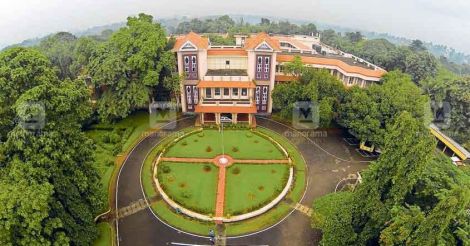Changes in the warming patterns of the subsurface ocean and atmosphere form and intensify more cyclones along the west coast of India
Changing patterns of ocean and atmosphere warming and their influences are causing more severe cyclones over the Eastern Arabian Sea adjacent to India’s densely populated west coast, a new study has found.
In the Arabian Sea, tropical cyclones are more prevalent just before and at the start of the southwestern monsoon during March–June and after the season in October–December. More weather systems are developing into cyclones in the recent epoch, pointing to a change in the environmental factors conducive to storm activity, the study published online first in the prestigious Nature Scientific Reports on Friday.
Large-scale ocean subsurface conditions have a crucial influence on the formation of cyclones over the Eastern Arabian Sea through the ocean’s sensitivity to atmospheric forcing, or the difference between incoming solar energy and its outgoing reflection.
cyclones
“This cyclone tendency and its clustering over Eastern Arabian Sea needs attention in terms of forecasting, catastrophe risk reduction, and climate change adaptation due to the security of coastal urban and rural habitats, livelihoods, and essential infrastructure along the coasts,” wrote the scientists at Cochin University of Science and Technology, Ministry of Earth Sciences and University of Sussex, UK who jointly conducted the study.
“The report urges development strategies that account for the dangers posed by a changing climate and weather as well as policy and technological initiatives in the areas of storm warning, impact-based local weather services, and localised reliable weather services,” pointed out Dr Mrutyunjay Mohapatra, Director General Meteorology, India Meteorological Department, one of the authors.
“IMD’s storm warning service is one of the best in the world,” Dr Mohapatra added. “We favour more impact-based forecasting relevant for even better anticipatory action at local levels in view of the challenges of climate change, forecast users’ special needs and our own increasing scientific and technical capabilities.”
A tropical cyclone is a low-pressure system formed over warm tropical when the sea-surface temperature is above 26.5°C. They can continue for days or weeks and travel great distances till it dissipates over land or cooler oceans.
The study pointed out that the thermodynamic structure—comprising heat, temperature and energy relationships—of the upper ocean and lower atmosphere has a significant impact on the development and intensification of cyclones, technically called cyclogenesis, over the Eastern Arabian Sea.
This observed rise in development and intensification of cyclones in high numbers in certain periods over the Eastern Arabian Sea is regulated by a rise in thermal instability and humidity in the middle part of the troposphere, the outermost part of the atmosphere 600 – 10,000 km above the earth. Instability denotes the tendency for air parcels to shoot up when warmed, thereby causing severe weather.
At the same time, changes in ocean temperature variation at different depths as a result of global warming cause processes below the ocean surface favouring tropical cyclone formation. This is done by extending the development of relatively stable, warmer and colder layers within the deep ocean.
More severe cyclones are caused by high tropical cyclone heat potential, denoting the heat content from the sea surface to the depth of 26◦ isotherm—an imaginary line connecting points with the same temperature—at 50–100 metres ocean depth.
Ocean subsurface warming present in this sea region influences the development and intensification of cyclones mostly during March–June. On the other hand, mid-tropospheric relative humidity and thermal instability influence such development and intensification of an anomalously high number of cyclones within a short period (called clustering) over the Eastern Arabian Sea during the October – December season.
Tropical cyclones also interact and intensify over regions of higher tropical cyclone heat potential. Very Severe Cyclonic Storm (119−221 kmph) Ockhi that formed in the Bay of Bengal encountered anomalously high sea surface temperature and ocean subsurface temperatures, leading to its rapid intensification over the Eastern Arabian Sea.
The paper points out the increasing trend of intense cyclones especially in the post-monsoon period. Amidst increasing tropical cyclone activity, post-monsoon events are gaining intensity. The first recorded post-monsoon Extremely Severe Cyclonic Storm (ESCS, with maximum winds above 168kmph of the Arabian Sea occurred in October 2014 (Cyclone Nilofar) followed by two back-to-back ESCSs during the next post-monsoon season (2015 – Chapala and Megh). In 2019 there were five events, ESCS Maha coexisted briefly with the Super Cyclonic Storm (above 222kmph) Kyar as an unprecedented double event in the satellite era (after 1961).
The paper’s lead author is Abhiram Nirmal, a doctoral researcher at the Advanced Centre for Atmospheric Radar Research (ACARR), CUSAT, guided by director Prof S Abhilash. Other authors are Dr Syam Shankar, a researcher at the National Centre for Medium Range Weather Forecasting, Dr. M. Mohaparatra, IMD, Dr A K Sahai, scientist at the Indian Institute of Tropical Meteorology, and Dr Max Martin, a University of Sussex geographer affiliated with ACARR.

The paper is an outcome of the research Forecasting with Fishers that ACARR locally led over the past five years. IMD, Indian National Centre for Ocean Information Services, and the artisanal fishing communities of Thiruvananthapuram and Kanyakumari took part in this University of Sussex initiative supported by Sussex Sustainability, Royal Geographical Society and UK Research and Innovation.
The research looked at weather-related hazards, their implications for artisanal fishers, and options to improve forecasts and their use. Another joint study on localised marine weather forecasts is expected to be published in a prestigious journal in the coming weeks.
For more information:
Prof S Abhilash, ACARR, [email protected]; WhatsApp: +91 9561642841
The paper is available freely from nature.com
